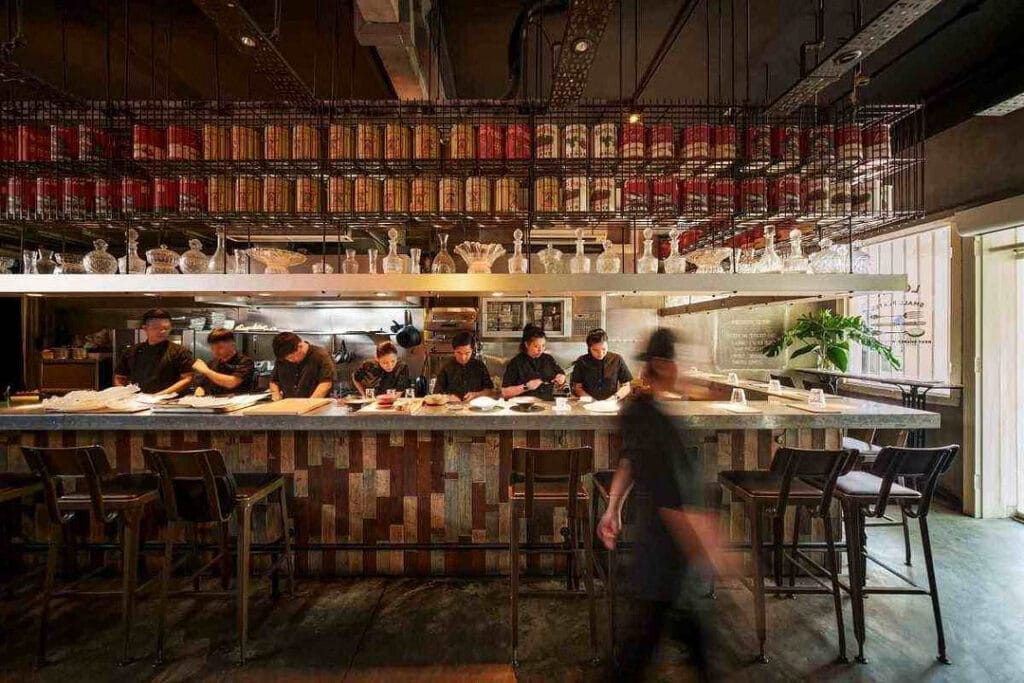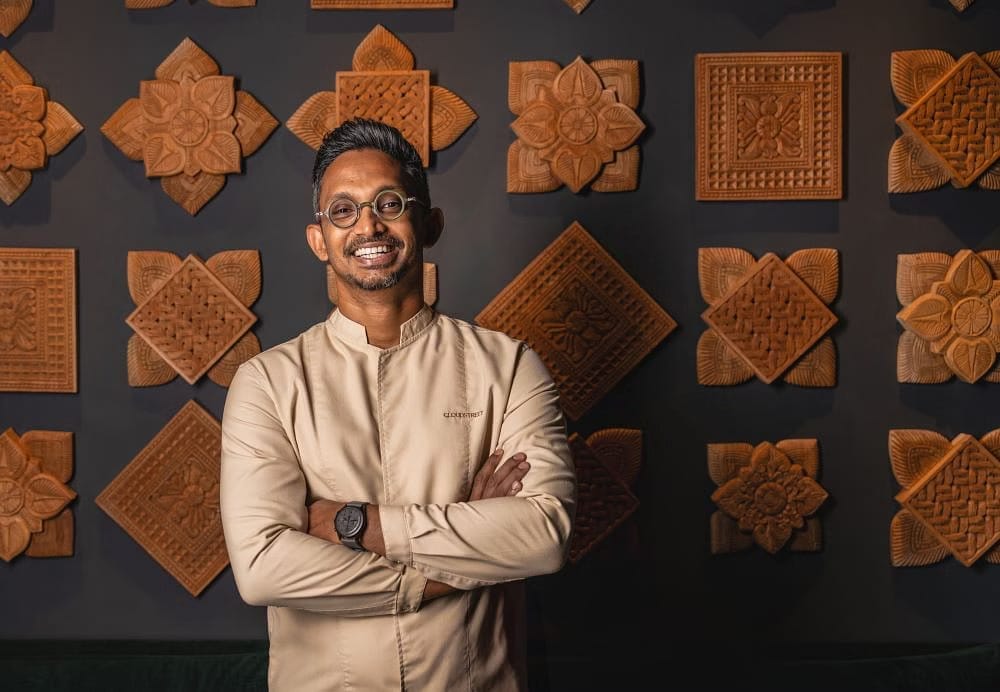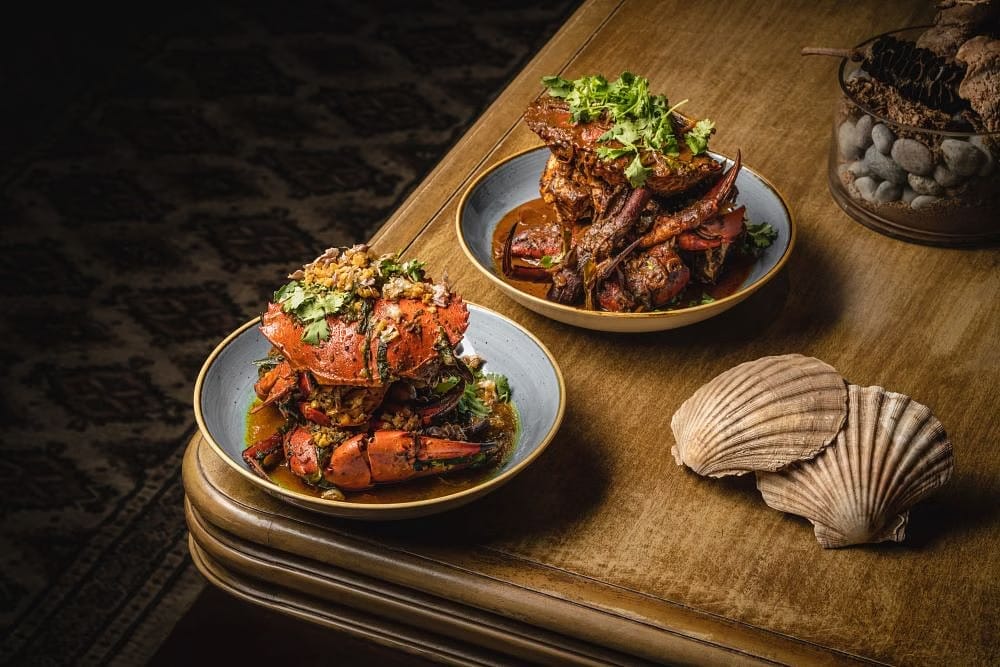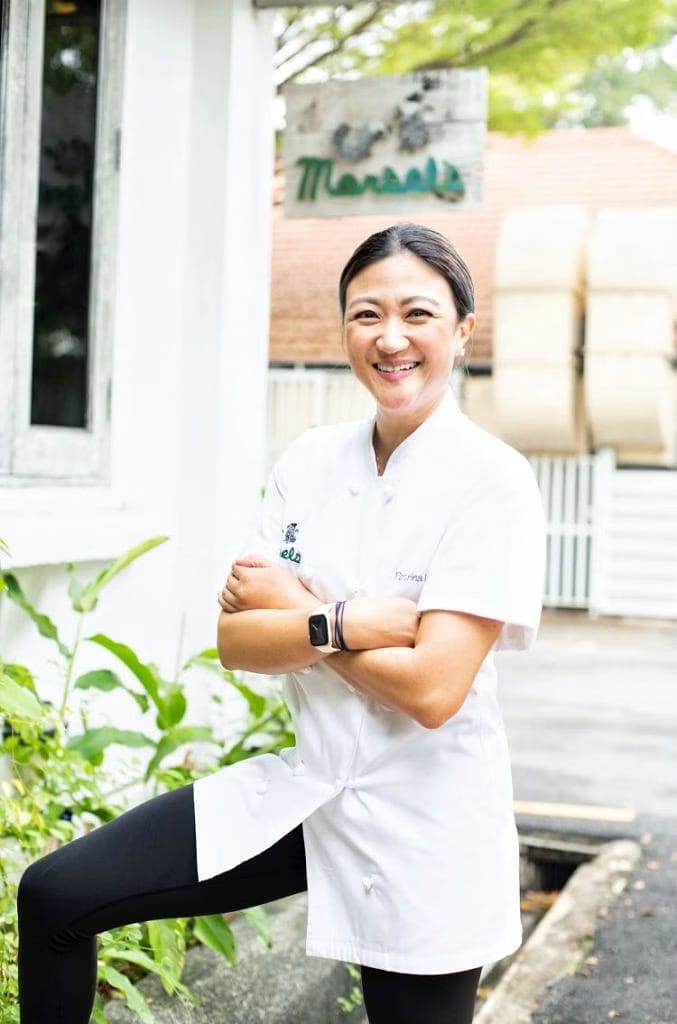by Grace Ma

Photo: Lolla
While last year was abuzz with high-profile restaurant openings and chef collaborations, some restaurants are bracing themselves for a challenging 2024 with rumbles of a turbulent economy ahead.
According to the Accounting and Corporate Regulatory Authority, 3,405 new food and beverage businesses were opened from January to November 2023. In the same period, 2,544 companies also ceased operations, pointing to a high turnover rate of eateries in a competitive landscape. This number includes restaurants, cafeterias, cafés, fast food joints, pubs, delis, food manufacturing operations, and catering businesses.
On the fine dining front, chefs and restaurateurs have noted a drop in reservations since mid-2023 as diners are going on revenge travel sprees and tightening their dining belts locally. Adding to the blues is the increase in Goods and Services Tax to nine per cent that was implemented this month and Singapore’s standing as the most expensive city in the world in 2023, according to the Economic Intelligence Unit.
Loh Lik Peng, chief executive officer of the Unlisted Collection group of restaurants, remarks: “There is little doubt that the majority of the public will face more financial constraints in 2024. Inflation and the cost of living remain a concern, as well as higher interest rates for loans and mortgages.”

Loh Lik Peng, CEO of Unlisted Collection, which includes Michelin-starred Zen, Nouri and Cloudstreet in Singapore. (Photo: Unlisted Collection)
Loh, who also has restaurants in Sydney, London, Shanghai, and Dublin, says that fine-dining in these cities weathers the same conditions. He says, “It all points to a similar direction. Consumers are more careful with their spending, so businesses need to be aware of that. Cost of living pressures is now a global issue because of inflation and high-interest rates.”
His hospitality group runs 17 restaurants in Singapore, including Zén, Cloudstreet, Nouri, and Burnt Ends, and over 20 restaurants and hotels overseas.
Echoing the gloomy sentiment is Rishi Naleendra, chef-owner of two-Michelin-starred Cloudstreet. He says that he will be adopting a “more defensive” strategy for this year — a not-so-subtle hint that openings will not be on his radar for a while. He opened Sri Lankan restaurant Kotuwa and Fool wine bar in 2020 and 2021, respectively.

Rishi Naleendra, chef-owner of two-Michelin-starred Cloudstreet. (Photo: Cloudstreet)

A la carte seafood dishes from Kotuwa, chef Rishi Naleendra’s casual Sri Lankan dining concept. (Photo: Kotuwa)
“We’re in the process of relocating Kotuwa, a move that comes with a substantial cost. While we’ll feel the financial impact on our cash flow, we believe it’s a good decision. The new location is not about thriving; it’s more about survival mode. We focus on maintaining a healthy cash flow and staying committed to what we do.” Kotuwa’s new outlet will be at the upcoming lifestyle project by Lo & Behold Group in River Valley, which is slated to open in the second quarter of 2024.
Besides grappling with a weak economic outlook, restaurants must deal with rising operational costs, manpower, and rental woes. Lolla’s head chef Johanne Siy shares that the restaurant’s prices of ingredients, labour, rent, and electricity, ranked number 63 on Asia’s 50 Best 2023 extended list, have increased by 10 to 40 per cent in 2023.
Delivering value to diners
Industry insiders that The Peak spoke to say that the key to thriving this year is having a unique market positioning and consistently providing value-added dining experiences. This becomes more crucial as fickle diners are presented with a buffet of new restaurant openings every month, and the threshold for dining slip-ups becomes lower.
Loh says: “Consumers will be more discriminating in their spending habits and rightly so given the circumstances. I believe they will still spend, but they are likely to support the businesses that give them the best value for money while delivering high-quality dining experiences.”

Andrew Tjioe, president and chief executive officer of Tung Lok Group, which includes fine-dining concepts Tong Le Private Dining and TungLok Signatures. (Photo: Tung Lok Group)
Andrew Tjioe, president and chief executive officer of Tung Lok Group, which runs fine dining concepts Tóng Lè Private Dining and TungLok Signatures, believes that consistent food and service quality will guarantee repeat customers. He says: “Rather than engaging in discount strategies, we prefer to offer value to our consumers through wholesome dining experiences, and those who truly understand food will appreciate it.

Petrina Loh, chef-owner of Morsels at Dempsey Hill. (Photo: Morsels)
Petrina Loh, who owns the innovative Asian fusion restaurant Morsels in Dempsey Hill, tried launching a tasting menu last April but found that customers wanted something quick and casual. She has since switched to an a la carte menu with set meal options for “those who are lazy to pick and choose”.
She has also diversified her 10-year-old business, including a catering and private dining arm and event space. She explains: “It is important to find the balance of keeping our prices wallet-friendly, service intimate, and still providing the right quality of nourishment.”

Daniele Sperindio, chef-owner of one-Michelin-starred Art di Daniele Sperindio. (Photo: Art di Daniele Sperindio)
Also resonating with the value proposition is Daniele Sperindo, chef-owner of one-Michelin-starred Art di Daniele Sperindio at National Gallery Singapore. He is also seeing diners eschewing lengthy degustation menus, and some have opted for his restaurant’s two- to four-course options instead.
He says: “I believe that this is the future of fine dining where guests have the flexibility to choose — similar to what is happening in Europe — and once in a while try the degustation menu for a more comprehensive dining experience. Events and catering are also important to us as these are valuable additional revenue streams.”

One-Michelin-starred Art di Daniele Sperindio at National Gallery Singapore now has two- to four-course lunch and dinner options besides its seven-course degustation menu. (Photo: Art di Daniele Sperindio)
Shorter courses for lunch
With added pressure to bring in revenue, some fine dining restaurants are zeroing in on their lunch offerings, making them more wallet-friendly and accessible for those who are time-starved.

One of the a la carte menu options in Altro Zafferano is Acquerello risotto with scallop crudo and candied Amalfi lemon. (Photo: Altro Zafferano)
One of them is Altro Zafferano. Surrounded by panoramic views of the Marina Bay waterfront at its Ocean Financial Centre locale, it made sense for the Italian restaurant to make “fine dining more accessible and appeal to a broader audience”, says its marketing manager Marina Korob.
Since last July, it has introduced two-course set lunches in addition to three-course options and streamlined its a la carte menu to dishes with special stories and quality Italian ingredients, such as the spaghetti with Datterino tomatoes and Acquerello risotto with scallop crudo and candied Amalfi lemon.
Likewise, Naleendra has also introduced set lunch options at lower prices at Fool wine bar and plans to serve lunch at Kotuwa’s new outlet four to five days a week instead of the current two.

Lolla introduced a Friday lunch service last December to improve its revenue stream. (Photo: Lolla)
Last month, Siy introduced a Friday lunch service at Lolla, now that the team is “bigger and better, and it doesn’t affect the working hours because everyone still comes in at the same time, but it will definitely improve the revenue stream”.
Three-Michelin-starred Zen by Swedish chef-restaurateur Bjorn Frantzen is now offering a new seven-course Luncheon Experience menu, albeit for different reasons. Its operations and beverage director Aaron Jacobson explains: “This was not part of a strategy to make fine dining more accessible. It was created for our top regulars who were asking for an expedited version of the menu for lunch because they wanted a quicker experience. First-time guests who book lunch would usually go for the full nine-course tasting menu.”

Three-Michelin-starred Zén launched a shorter seven-course lunch menu for time-starved regulars. (Photo: Zén)
Branching out to casual concepts
Despite the anticipated economic challenges, new openings still abound, thanks to investors who want to support young talents and a relatively low barrier to entry. Long-term survival, however, would depend on sound business models and the ability to fill a specific niche.
Jacobsen sees the high turnover of restaurants as a market correction rather than failure. “There are so many openings because Singaporeans love food and dining out. Many fail because they lack quality, consistency, value, and identity, but those with quality always thrive.”
He is confident that Brasserie Astoria, Zén’s new fine-casual sibling that opened last August, will be “a success long into the future”, given the reputation of its Stockholm flagship, its beautiful historical location in Victoria Concert Hall and a team of experienced Zén alumni, from the dishwashers to the head chef, running the operations.

Brasserie Astoria, Zén’s new fine-casual sibling, opened last August. (Photo: Zén)
Last month, one-Michelin-starred Whitegrass opened casual offshoot Dew, where the menu mainly comprises small sharing plates and boutique sake labels, of which more than two-thirds are exclusive to the outlet. Its executive chef Takuya Yamashita shares that this is to “ensure access to a wider audience while maintaining its stature as a fine-dining flagship.
The crucial factor to a successful concept is a nuanced understanding of the market, adept identification of gaps or trends, and the delivery of unique value propositions”.

Dew is a casual concept by one-Michelin-starred Whitegrass revolving around sharing plates and boutique sake labels. (Photo: Dew)
The ilLido Group, which runs one-Michelin-starred Braci, will also be opening two casual concepts this year: Baia, a Roman-inspired rooftop bar at Esplanade Mall, and Sospiri, an Italian restaurant cum bar in the new IOI Central Boulevard Towers in Marina Bay.

The ilLido Group is opening a new Roman-inspired rooftop bar Baia at Esplanade Mall. (Photo: Baia)
Facing overseas competition
Over the past year, neighbouring cities such as Bangkok, Kuala Lumpur, and Ho Chi Minh City have been playing catch-up regarding their fine-dining offerings. Some of these restaurants are helmed by world-class chefs offering menus at a fraction of the prices here.
While some diners lament the strong Singapore dollar as a deterrent to dining at fine-dining restaurants here, others feel that each market has its own merits and has no basis for comparison. For some restaurants, it boils down to creating a unique dining experience that cannot be replicated elsewhere.
A restaurant has to improve and evolve to attract diners constantly, says Han Li Guang, chef-owner of one-Michelin-starred Labyrinth, which has been around for a decade and sees a 70-to-30 ratio of foreign to local clientele. Han will launch a new chef’s table experience where he will personally serve the guests and expand the beverage list to include tea pairings and unconventional labels from Thailand and China.

A new dish Fish Milk Soup of amadai and fish paste noodles at one-Michelin-starred Labyrinth. (Photo: Labyrinth)
Lolla’s Siy sums things up succinctly: “This industry is built on people and relationships. The most valuable asset of any restaurant is not the chef, the building, or any one person in the team, it is the relationships that we have nurtured with each other and with our guests over the years. As long as we don’t forget that and continue nurturing those relationships, we are on the right track.”


